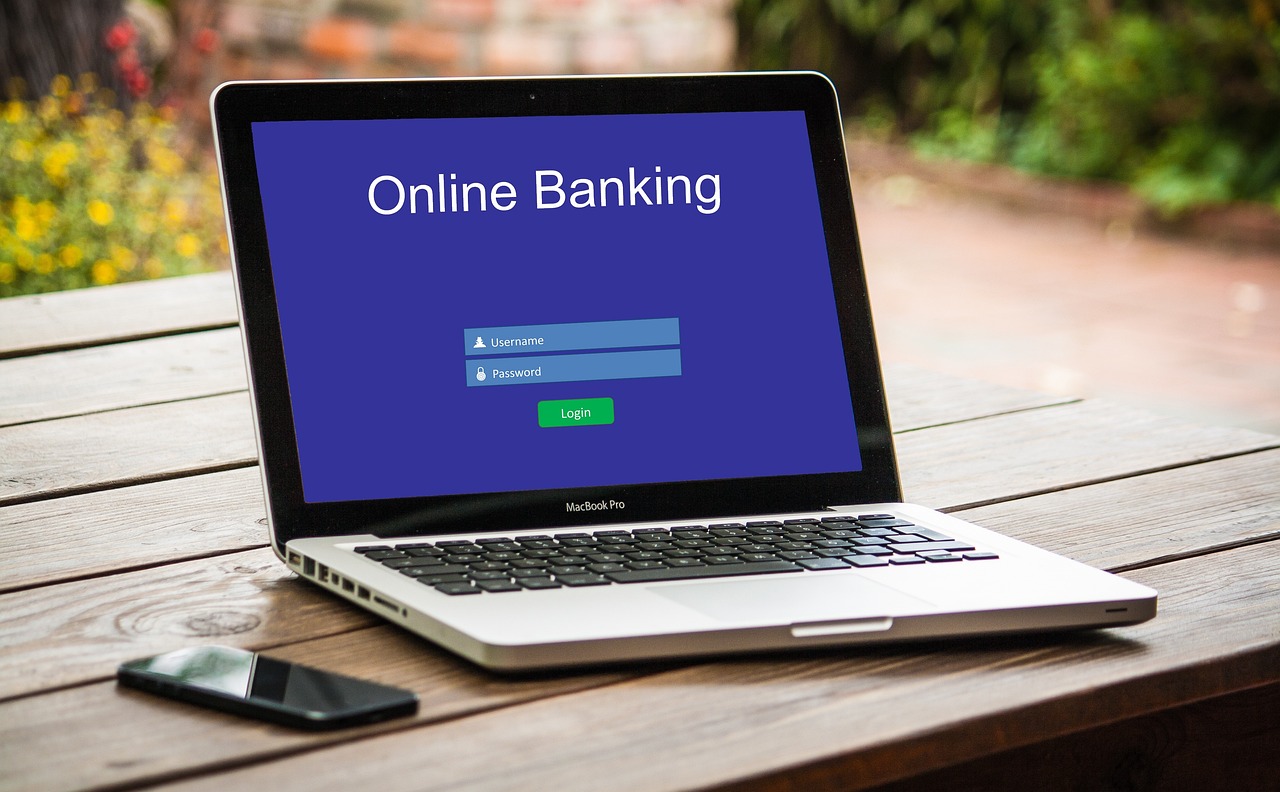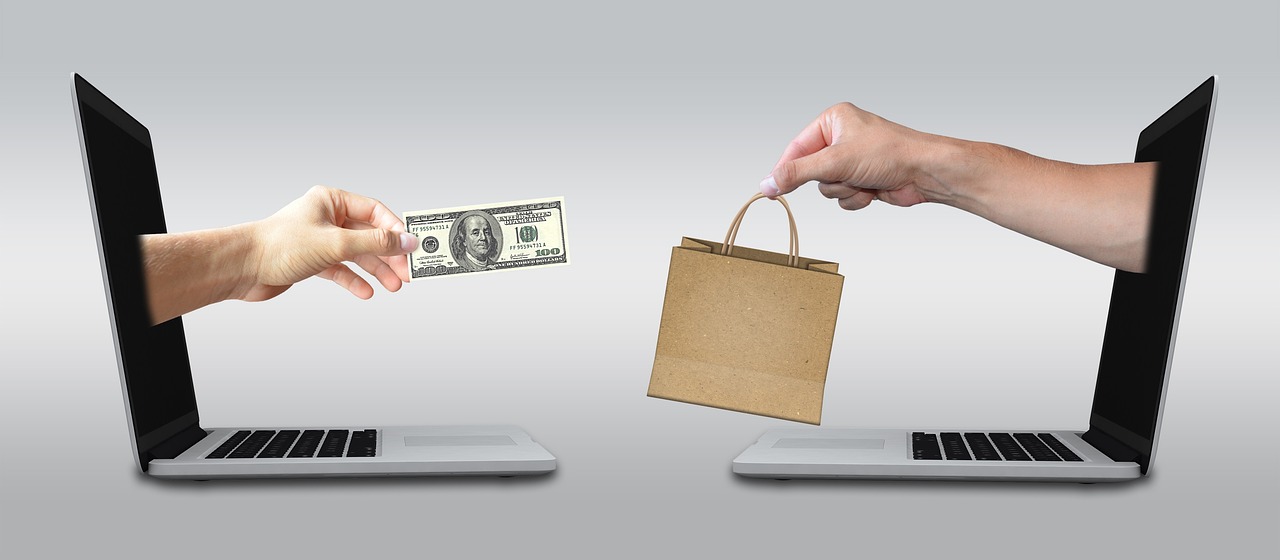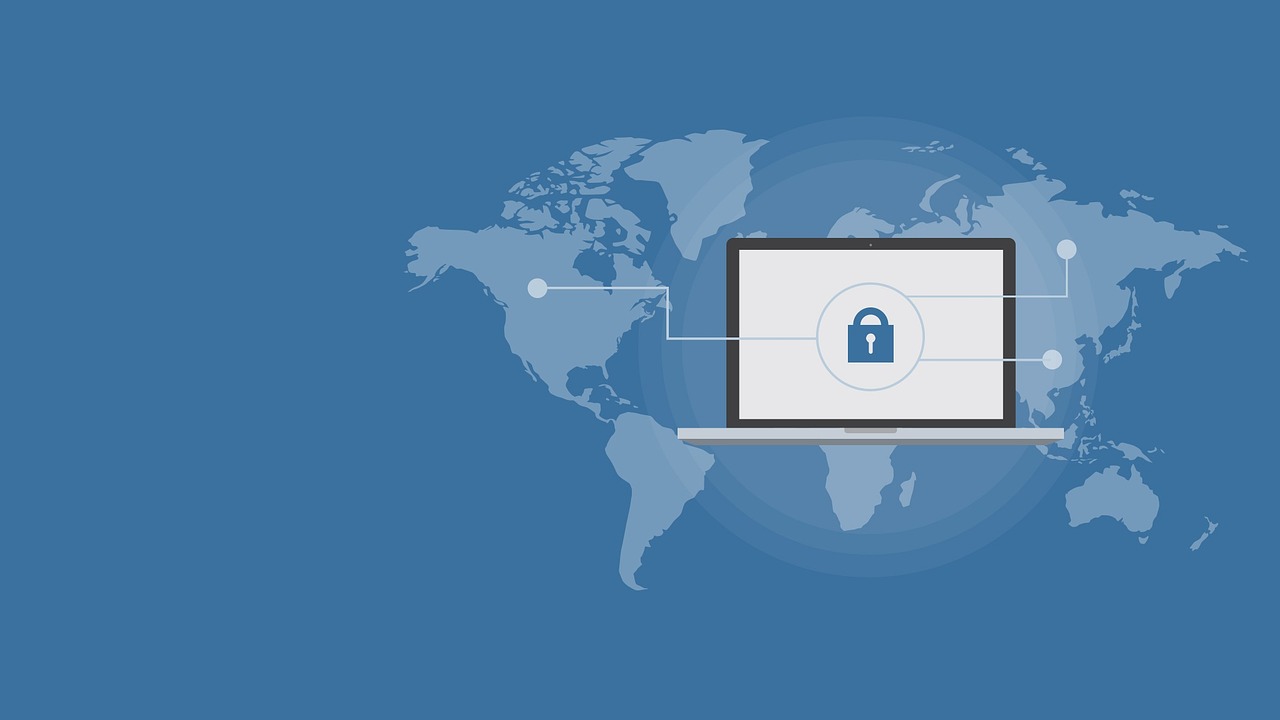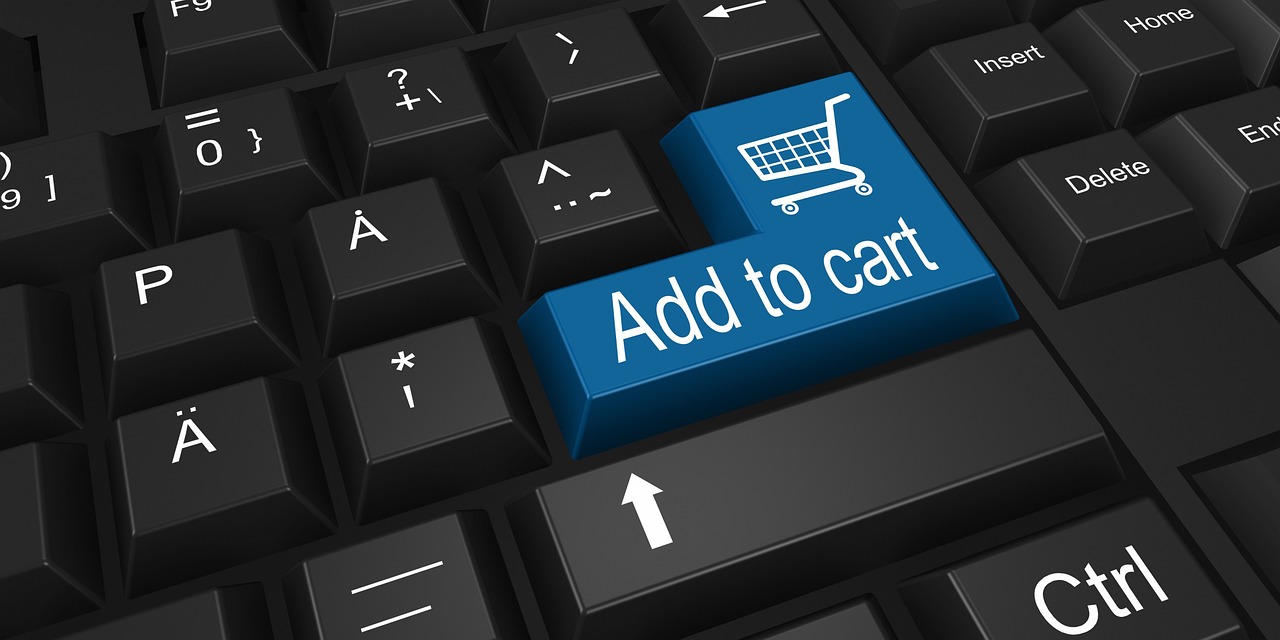Online Shopping - Staying Safe and Secure
In today’s fast-paced digital world, online shopping has become a staple for many of us. It’s convenient, it’s quick, and let’s face it, who doesn’t love the thrill of snagging a great deal from the comfort of their couch? However, as we dive into the world of e-commerce, it’s crucial to remember that with great convenience comes great responsibility. Ensuring a safe and secure online shopping experience is not just a choice; it’s a necessity. So, how can you navigate this virtual marketplace without falling prey to scams or compromising your personal information? This article explores essential tips and strategies that will empower you to shop online safely, covering everything from secure payment methods to recognizing potential scams.
Online security is a multifaceted concept that involves various measures designed to protect your personal information during online transactions. When you shop online, you’re often required to provide sensitive data, such as your credit card number, home address, and sometimes even social security information. This is where encryption comes into play. Encryption transforms your data into a code, making it unreadable to anyone who might intercept it. Additionally, always ensure that the websites you visit have secure connections, which you can identify by looking for "https://" at the beginning of the URL. The "s" stands for secure, indicating that your connection is encrypted and your data is being safeguarded. By sticking to reputable websites, you significantly reduce the risk of exposing your personal information to malicious entities.
When it comes to online shopping, selecting the right payment method is critical to ensuring your financial safety. There are several secure payment options available, each with its own set of benefits. Credit cards are widely used due to their built-in fraud protection features. In addition, digital wallets like PayPal or Apple Pay provide a layer of security by allowing you to make purchases without directly sharing your credit card information with the merchant. Payment services often come with buyer protection policies that can help you recover your money in case of fraud. But how do you ensure that you’re using these payment methods safely?
Using credit cards safely online involves a few key practices. First and foremost, regularly monitoring your statements is essential. This allows you to quickly identify any unauthorized charges. Additionally, consider utilizing virtual card numbers, which act as a proxy for your actual card details. This way, even if a merchant’s site is compromised, your real card information remains secure. Understanding the chargeback process is also crucial; if you find a fraudulent charge, you can dispute it with your credit card company and potentially get your money back.
Virtual card numbers are a fantastic way to enhance your security during online transactions. They work by generating a temporary card number that you can use for your online purchases. This means your actual card details are never exposed to the merchant, significantly reducing the risk of fraud. Many banks and financial institutions offer this service, making it a convenient option for savvy shoppers.
Regularly checking your transaction history is one of the simplest yet most effective ways to protect your financial information. By keeping an eye on your purchases, you can quickly spot any unauthorized charges and take immediate action. Most banks provide mobile apps that make it easy to track your spending in real time, so there’s really no excuse not to stay informed!
Digital wallets are gaining popularity, and for good reason! They offer a convenient way to manage multiple payment methods in one place. Not only do they streamline the checkout process, but they also come equipped with enhanced security features, such as encryption and tokenization, which further protect your financial data. Plus, many digital wallets provide additional layers of security, such as biometric authentication, making it even harder for unauthorized users to access your accounts.
As online shopping grows, so does the risk of encountering scams. It’s vital to stay vigilant and recognize the signs of potential fraud. Common scams include phishing emails that trick you into revealing personal information, counterfeit websites that mimic legitimate retailers, and offers that seem too good to be true. Always remember, if an offer looks too good to be true, it probably is. So, how do you protect yourself?
Phishing attacks are a common tactic used by scammers to steal personal information. These attacks often come in the form of emails or messages that appear to be from reputable companies. To avoid falling victim, always verify the sender’s email address and be cautious of links that redirect you to unfamiliar websites. If you’re unsure, go directly to the company’s website instead of clicking on links in the email.
Identifying fraudulent e-commerce sites is crucial for a safe shopping experience. Look for signs such as a lack of secure connections (no "https://" in the URL), poorly written content, and missing contact information. Reading customer reviews can also provide insight into the legitimacy of a website. If you see multiple complaints about non-delivery or poor customer service, it’s best to steer clear.
Safeguarding your personal information is paramount when shopping online. Using strong passwords is a fundamental step in enhancing your security. Avoid using easily guessable information such as birthdays or common words. Instead, opt for a mix of letters, numbers, and symbols. Password managers can help you create and manage complex passwords, making it easier to keep your accounts secure.
Creating and managing strong passwords is essential for online security. A good password should be at least 12 characters long and include a combination of uppercase letters, lowercase letters, numbers, and special characters. Additionally, avoid reusing passwords across multiple sites, as this increases your vulnerability. Consider using a password manager to store your passwords securely and generate complex passwords for you.
Enabling two-factor authentication (2FA) on your shopping accounts adds an extra layer of security. Even if someone manages to obtain your password, they would still need a second form of verification, such as a code sent to your phone, to access your account. This makes it significantly more difficult for unauthorized users to gain access, providing you with peace of mind while shopping online.
Staying updated on the latest security trends and vulnerabilities is vital for maintaining your safety while shopping online. The digital landscape is constantly evolving, and new threats emerge regularly. By keeping yourself informed, you can adapt your practices to protect your personal information effectively. Following reputable security blogs and participating in community awareness programs can help you stay ahead of potential threats.
There are numerous reputable security blogs and websites that provide valuable insights and updates on online shopping safety. Subscribing to these resources can keep you informed about potential threats and best practices. Some notable blogs include Krebs on Security, The Hacker News, and Security Week. By following these, you can arm yourself with knowledge and make informed decisions while shopping online.
Engaging in community or organizational security awareness programs can significantly enhance your understanding of safe online shopping practices. Many organizations offer workshops and training sessions that educate consumers about emerging threats and how to protect themselves. By participating, you not only learn valuable information but also share this knowledge with others, creating a more informed community.
- What should I do if I suspect a scam? If you suspect a scam, immediately report it to your bank and the website where you made the purchase. Monitor your accounts closely for any unauthorized transactions.
- How can I tell if a website is secure? Look for "https://" in the URL and check for a padlock icon in the address bar. Additionally, read reviews and check the website’s contact information.
- Are digital wallets safe to use? Yes, digital wallets are generally safe as they use encryption and tokenization to protect your financial information. However, always use reputable services and enable security features.

Understanding Online Security
This article explores essential tips and strategies for ensuring a safe online shopping experience, covering everything from secure payment methods to recognizing potential scams.
In today’s digital world, online security is more crucial than ever. With the rise of e-commerce, ensuring that your personal and financial information remains protected is a top priority. So, what does online security really entail? It encompasses various measures designed to safeguard your data while you shop online. One of the foundational elements of online security is encryption, which is like a secret code that keeps your data safe from prying eyes. When you see “HTTPS” in a web address, it signifies that the site employs encryption to protect your information during transmission.
Another vital aspect is ensuring you are using secure connections. This means shopping only on websites that provide a secure connection, which can be identified by a padlock icon in the address bar. But it’s not just about the technical aspects; using reputable websites is equally important. Think of it like shopping in a well-known store versus a random stall at a flea market. You want to trust that your payment details are safe and that you’ll receive what you pay for.
To further illustrate the importance of online security, consider the following table that outlines common online security measures:
| Security Measure | Description |
|---|---|
| Encryption | Protects data during transmission to prevent unauthorized access. |
| Secure Connections | Ensures that data is sent over a secure channel, indicated by HTTPS. |
| Reputable Websites | Shopping from established retailers reduces the risk of fraud. |
Moreover, being aware of potential threats is crucial. Cybercriminals are always on the lookout for vulnerabilities to exploit. By understanding the basics of online security, you can better protect yourself from falling victim to scams or data breaches. A good practice is to regularly update your passwords and use unique ones for different sites. Just like you wouldn’t use the same key for your house and your car, don’t use the same password across multiple platforms.
In summary, understanding online security is about being proactive. By familiarizing yourself with secure practices, you can enjoy a safer online shopping experience. So the next time you browse for that perfect pair of shoes or the latest gadget, remember: a little caution goes a long way in protecting your personal information.
- What is online security?
Online security refers to the measures taken to protect personal and financial information during online transactions. - How can I tell if a website is secure?
Look for "HTTPS" in the URL and a padlock icon in the address bar. - What should I do if I suspect a website is fraudulent?
Do not enter any personal information and report the site to authorities.

Choosing Secure Payment Methods
When it comes to online shopping, one of the most crucial decisions you'll make is how to pay for your purchases. Choosing a secure payment method is like locking the door to your house; it keeps unwanted intruders at bay and protects your valuables. With a variety of options available, it’s essential to understand the benefits and drawbacks of each method to ensure your financial safety.
Credit cards remain one of the most popular payment methods for online transactions. They offer a level of security that many other options can’t match. When you use a credit card, you typically have fraud protection, which means that if someone makes unauthorized charges, you can dispute them and potentially get your money back. But, it’s not just about using a credit card; it’s about using it wisely. Regularly monitoring your statements is vital. Imagine discovering a charge you didn’t make weeks after it happened; by then, it might be too late to act. Keeping an eye on your transactions ensures you catch any suspicious activity early.
Another fantastic option is the use of digital wallets. These platforms, such as PayPal, Apple Pay, or Google Wallet, allow you to store your payment information securely and make transactions without exposing your card details. Think of them as a safe that holds your financial information. They not only provide convenience but also add an extra layer of security. When you shop online using a digital wallet, your actual card number is never shared with the merchant. This means that even if a website is compromised, your sensitive information remains safe.
For those who want an even higher level of security, consider using virtual card numbers. These are temporary card numbers that can be used for online purchases, effectively acting as a shield for your actual credit card details. It’s like wearing a mask when you go out; it protects your identity. With virtual card numbers, you can set limits on spending or even specify a single-use number for a particular transaction, minimizing the risk of fraud.
To give you a clearer picture, here’s a quick comparison of popular payment methods:
| Payment Method | Security Level | Convenience | Buyer Protection |
|---|---|---|---|
| Credit Card | High | Moderate | Yes |
| Digital Wallet | High | High | Yes |
| Virtual Card Number | Very High | Moderate | Yes |
| Bank Transfer | Moderate | Low | No |
Remember, while these payment methods can significantly enhance your security, nothing is foolproof. It’s still essential to stay vigilant and be aware of your surroundings—both online and offline. Always shop from reputable websites and avoid making purchases on public Wi-Fi networks. Your financial safety is in your hands, so choose wisely!

Credit Card Safety
When it comes to online shopping, is paramount. With the convenience of shopping from home, many people overlook the potential risks associated with entering their credit card information online. To ensure a secure shopping experience, it's essential to adopt certain practices that can protect your financial information from unauthorized access. First and foremost, always monitor your credit card statements for any unusual activity. This simple habit can help you catch any fraudulent charges early and report them to your card issuer promptly.
Another effective way to enhance your credit card safety is by utilizing virtual card numbers. These are temporary card numbers generated by your bank or card issuer that can be used for online transactions. They allow you to shop without exposing your actual card details, significantly reducing the risk of your information being compromised. For instance, if a website is breached, your real credit card number remains safe, as only the virtual number is at risk.
Moreover, understanding the chargeback process can be a lifesaver. If you ever find unauthorized charges on your statement, knowing how to initiate a chargeback can help you recover your funds quickly. Most credit card companies have policies in place that protect consumers against fraud, allowing you to dispute charges and receive a refund if you act swiftly. Always keep records of your transactions and any communication with the seller, as this documentation can be crucial in resolving disputes.
Lastly, it’s essential to be aware of the security features your credit card offers. Many cards come with built-in fraud detection systems that monitor your spending patterns and alert you to any suspicious activity. Additionally, some issuers provide one-time passwords or two-factor authentication for online transactions, adding an extra layer of security. Make sure to enable these features whenever possible, as they can significantly reduce the risk of fraud.
In summary, practicing credit card safety while shopping online involves a combination of vigilance, the use of advanced security features, and understanding your rights as a consumer. By following these guidelines, you can enjoy the benefits of online shopping without compromising your financial security.
- What should I do if I notice unauthorized charges on my credit card?
If you see any unauthorized charges, contact your credit card issuer immediately to report the issue and initiate a chargeback.
- Are virtual card numbers safe to use?
Yes, virtual card numbers provide an extra layer of security by allowing you to shop without revealing your actual credit card details.
- How can I create a strong password for my online shopping accounts?
Use a combination of upper and lower case letters, numbers, and special characters. Avoid using easily guessable information like birthdays.

Virtual Card Numbers
In the ever-evolving landscape of online shopping, have emerged as a powerful tool for enhancing security during transactions. Imagine being able to shop online without the constant fear of having your credit card information compromised. Virtual card numbers allow you to do just that! These unique, temporary card numbers are generated by your bank or financial institution, providing an extra layer of protection while you shop. Instead of using your actual credit card number, you can use a virtual number that is linked to your account but is only valid for a limited time or for a specific merchant.
One of the primary benefits of using virtual card numbers is that they help prevent fraud. If a hacker manages to obtain your virtual card number, they can only use it until it expires or for the specific transaction you authorized. This greatly reduces the risk of unauthorized charges on your real credit card. Additionally, many virtual card services allow you to set spending limits, giving you even more control over your online purchases.
Here’s how it typically works:
- When you decide to make a purchase online, you log into your banking app or website.
- You generate a virtual card number for that transaction.
- This number is then entered at checkout instead of your actual credit card number.
Moreover, using virtual card numbers is incredibly easy. Most banks that offer this service have user-friendly interfaces that make it simple to create and manage these numbers. Just think of it as having a disposable card that you can use for online shopping, which can help you keep your actual card details safe and sound. It's like wearing a mask when you're out in public—keeping your true identity hidden while still being able to participate in the world around you!
However, it’s important to note that not all merchants accept virtual card numbers. While the acceptance rate is growing, you may occasionally run into a website that doesn’t support this payment method. Therefore, it's wise to have your actual card handy just in case. But overall, the advantages of using virtual card numbers far outweigh the potential drawbacks, making them an excellent choice for anyone looking to enhance their online shopping security.
What are virtual card numbers?
Virtual card numbers are temporary card numbers generated by your bank or financial institution for online transactions. They provide an additional layer of security by allowing you to shop without exposing your actual credit card details.
How do I get a virtual card number?
You can obtain a virtual card number by logging into your online banking account or mobile app, where you can generate a number specifically for your online purchases.
Are virtual card numbers safe to use?
Yes, virtual card numbers are generally considered safe. They help protect your actual credit card information by providing a temporary number that can only be used for specific transactions.
Can I use virtual card numbers everywhere?
Not all merchants accept virtual card numbers, but their acceptance is increasing. It’s advisable to have your actual card available in case you encounter a site that doesn’t support virtual numbers.

Monitoring Transactions
In the fast-paced world of online shopping, it’s easy to get swept away by the excitement of snagging a great deal. However, amidst this thrill, one critical aspect often gets overlooked: . Just like you wouldn’t leave your front door wide open while you’re out shopping, you shouldn’t ignore the importance of keeping an eye on your financial activities online. Regularly checking your transaction history is a vital step in safeguarding your personal and financial information.
Why is this so important, you ask? Well, unauthorized charges can happen in the blink of an eye. Cybercriminals are always lurking, ready to exploit any opportunity. By taking a proactive approach to monitoring your transactions, you can quickly identify any suspicious activity. This means you can act fast to secure your accounts and minimize potential damage. Imagine waking up one morning to find a hefty charge for a luxury item you didn’t purchase. The shock can be overwhelming, but if you catch it early, you can dispute the charge and protect your finances.
Here are some key practices to follow when monitoring your transactions:
- Set a Routine: Make it a habit to check your bank statements and transaction history at least once a week. This routine can help you spot any discrepancies before they escalate.
- Use Alerts: Many banks and financial institutions offer alert services that notify you of transactions made on your account. Set up alerts for transactions over a certain amount or any transactions made without your knowledge.
- Review Statements: When your monthly bank or credit card statement arrives, don’t just glance at it. Take the time to review each transaction. Look for any charges that seem unfamiliar or suspicious.
Additionally, if you notice a transaction that you don’t recognize, don’t hesitate to contact your bank or credit card provider immediately. They can guide you through the dispute process and help you secure your account. Remember, it’s better to be safe than sorry!
Another effective strategy is to utilize financial management apps that can help you track your spending and transactions in real-time. These apps can categorize your purchases, set budgets, and provide insights into your spending habits. By being aware of where your money is going, you can make informed decisions and catch any unusual activity early on.
In conclusion, monitoring your transactions is not just a precaution; it’s a necessity in today’s digital shopping landscape. By staying vigilant and proactive, you can protect yourself from fraud and ensure that your online shopping experience remains enjoyable and secure.
Q: How often should I check my bank statements?
A: It’s recommended to check your bank statements at least once a week. Regular checks help you quickly identify any unauthorized transactions.
Q: What should I do if I find an unauthorized charge?
A: Contact your bank or credit card provider immediately to report the unauthorized charge. They will guide you through the dispute process.
Q: Are there apps that can help me monitor my transactions?
A: Yes, there are several financial management apps available that can help you track your spending, categorize purchases, and alert you to unusual activity.

Using Digital Wallets
In today's fast-paced digital world, has become a game-changer for online shopping. Imagine having all your payment methods neatly organized in one place, accessible with just a few taps on your smartphone. How convenient is that? Digital wallets not only simplify the checkout process but also provide enhanced security features that traditional payment methods often lack. They act as a shield, protecting your sensitive information from prying eyes while you shop online.
One of the standout advantages of digital wallets is their convenience. Instead of fumbling through your wallet for a credit card, you can simply log into your digital wallet app, select your payment method, and complete your purchase in seconds. This speed can make all the difference, especially during flash sales or limited-time offers where every second counts. Plus, many digital wallets store loyalty cards and coupons, allowing you to save even more while you shop.
But what about security? Digital wallets are equipped with cutting-edge security features that protect your financial information. For instance, they often use encryption to secure your data and may offer biometric authentication options like fingerprint or facial recognition. This means that even if someone were to get their hands on your phone, they wouldn't be able to access your wallet without your unique biometric signature. It's like having a personal bodyguard for your finances!
Moreover, digital wallets can also help you manage your spending better. Many apps provide insights into your spending habits, categorizing your purchases and showing you where your money goes. This feature can be incredibly beneficial for those who want to keep their finances in check. You can even set budgets and receive alerts when you're nearing your spending limits, ensuring that you stay within your financial means.
However, it's essential to choose a reputable digital wallet provider. Not all digital wallets are created equal, and some may have vulnerabilities that could put your information at risk. Before downloading an app, do your research. Look for wallets that have strong security measures in place, positive user reviews, and a solid reputation in the market. Here are a few popular options:
- PayPal
- Apple Pay
- Google Pay
- Venmo
- Samsung Pay
In conclusion, embracing digital wallets can significantly enhance your online shopping experience. They not only offer unparalleled convenience and security but also help you manage your finances more effectively. So next time you’re gearing up for an online shopping spree, consider using a digital wallet. It might just be the best decision you make!
Q: Are digital wallets safe to use?
A: Yes, digital wallets are generally safe as they use encryption and other security features to protect your information. However, it’s important to choose a reputable provider.
Q: Can I use a digital wallet in physical stores?
A: Absolutely! Many digital wallets can be used for in-store purchases as well, provided the store accepts contactless payments.
Q: What should I do if my digital wallet is compromised?
A: If you suspect that your digital wallet has been compromised, immediately change your password, contact your wallet provider, and monitor your financial accounts for any unauthorized transactions.

Recognizing Online Scams
In the vast and often chaotic world of online shopping, scams lurk around every corner, waiting to catch the unsuspecting shopper off guard. It's like walking through a bustling market where some vendors are genuine, while others are just out to make a quick buck at your expense. So, how can you tell the difference? Recognizing online scams is crucial to ensure that your shopping experience remains safe and enjoyable. Let's dive into some common pitfalls that can ensnare even the savviest of shoppers.
First and foremost, be wary of phishing emails. These deceptive messages often appear to be from legitimate companies, enticing you with unbelievable deals or urgent account updates. They may ask you to click on a link that leads to a fake website designed to steal your personal information. To avoid falling prey to these scams, always check the sender's email address carefully. If it looks suspicious or doesn't match the company's official domain, it's best to delete the email and move on.
Another red flag to watch for is counterfeit websites. These sites often mimic well-known retailers, offering products at prices that seem too good to be true. If you find a deal that makes your jaw drop, take a moment to investigate. Look for signs of legitimacy such as:
- Secure connections (look for "https://" in the URL)
- Clear contact information, including a physical address and phone number
- Customer reviews and ratings from reputable sources
By taking these precautions, you can significantly reduce the risk of shopping on a fraudulent site.
Additionally, keep an eye out for offers that seem too good to be true. Scammers often lure victims with unbelievable discounts or exclusive deals that are hard to resist. If you encounter a deal that seems overly generous, it’s wise to do your homework. Research the product and compare prices across different websites. If the deal is significantly lower than what other retailers are offering, it might be a scam.
Lastly, always remember the importance of trust your instincts. If something feels off about a website or an offer, don’t hesitate to walk away. Your gut feeling can be a powerful ally in the fight against online scams. Just as you wouldn’t buy a car without checking its history, don’t rush into an online purchase without verifying its legitimacy.
In summary, recognizing online scams is about staying alert and informed. By being aware of phishing attempts, counterfeit websites, unbelievable offers, and trusting your instincts, you can navigate the online shopping landscape with confidence. Remember, a little caution can go a long way in ensuring a safe and enjoyable shopping experience!
Q: How can I identify a phishing email?
A: Look for generic greetings, spelling errors, and suspicious links. Always verify the sender's email address.
Q: What should I do if I suspect a website is fraudulent?
A: Do not enter any personal information. Report the site to the relevant authorities and share your experience with others.
Q: Are there any tools to help me identify scams?
A: Yes, there are browser extensions and websites that can help check the legitimacy of online stores and alerts for known scams.

Phishing Awareness
In today’s digital world, phishing attacks have become a prevalent threat, targeting unsuspecting online shoppers. These malicious attempts often come disguised as legitimate communications, such as emails or messages from trusted sources, luring you into divulging sensitive information like passwords or credit card numbers. Imagine receiving an email that looks just like it’s from your bank, urging you to click a link to verify your account. Sounds convincing, right? This is precisely how phishing works, and it’s crucial to stay vigilant.
Recognizing a phishing attempt can be tricky, but there are telltale signs to watch for. For instance, look out for generic greetings like "Dear Customer" instead of your name, as legitimate companies usually personalize their communications. Additionally, be cautious of urgent language that pressures you to act quickly, such as threats of account suspension or limited-time offers. These tactics are designed to provoke anxiety, pushing you to make hasty decisions without fully assessing the situation.
Another red flag is poor grammar and spelling. Professional organizations typically proofread their communications, so if you notice unusual phrasing or typos, it's likely a scam. Furthermore, always hover over links before clicking. If the URL looks suspicious or doesn’t match the company’s official website, it’s best to avoid it altogether.
To protect yourself from phishing scams, consider these strategies:
- Verify the Source: If you receive a suspicious email, don’t click any links. Instead, visit the official website directly by typing the URL into your browser or using a bookmark.
- Use Two-Factor Authentication: This adds an extra layer of security to your accounts, making it harder for unauthorized users to gain access even if they have your password.
- Report Phishing Attempts: If you encounter a phishing email, report it to your email provider or the company being impersonated. This helps protect others from falling victim.
Staying informed about the latest phishing techniques is also essential. Cybercriminals constantly evolve their tactics, and being aware of new trends can help you stay one step ahead. Regularly educating yourself through reputable sources can enhance your defense against these threats. Remember, when in doubt, it’s always better to err on the side of caution.
| Question | Answer |
|---|---|
| What is phishing? | Phishing is a fraudulent attempt to obtain sensitive information by disguising as a trustworthy entity in electronic communications. |
| How can I recognize a phishing email? | Look for generic greetings, urgent language, poor grammar, and suspicious links. Always verify the sender's email address. |
| What should I do if I receive a phishing email? | Do not click any links. Report the email to your email provider and the organization being impersonated. |
| Can two-factor authentication help prevent phishing? | Yes, it adds an extra layer of security, making it more difficult for attackers to access your accounts even if they have your password. |

Spotting Fake Websites
In today's digital age, where online shopping has become a norm, knowing how to spot fake websites is crucial for your safety. Imagine walking into a store that looks appealing but is actually a front for a scam. That’s what fake websites do—they lure you in with attractive designs and unbelievable deals, only to steal your personal information or money. So, how can you avoid falling into this trap? Here are some key indicators to help you identify a fraudulent site.
First and foremost, always check the URL. A legitimate website typically has a URL that begins with https:// instead of http://. The 's' stands for secure, indicating that the site uses encryption to protect your data. If you see a padlock icon next to the URL, that’s a good sign! However, just because a site has 'https' doesn’t mean it’s trustworthy. Scammers can purchase SSL certificates too, so further verification is essential.
Next, look for contact information. A reputable online retailer will provide clear contact details, including a phone number, email address, and physical address. If you can only find a contact form or no contact information at all, it should raise a red flag. It’s like trying to call a business that doesn’t have a phone number—how can you trust them?
Another important factor is to read reviews. Genuine customer feedback can often be found on third-party review sites. If you stumble upon a website with no reviews or only positive testimonials that seem overly generic, it’s wise to proceed with caution. Just like you wouldn’t buy a product without checking its reviews in a physical store, the same principle applies online.
Additionally, be wary of prices that seem too good to be true. If a website is offering a high-end product at a fraction of the price you’d find elsewhere, it’s likely a scam. Think of it this way: if a deal sounds like a steal, it probably is! Scammers often use these bait-and-switch tactics to lure unsuspecting customers.
Lastly, consider using online tools or browser extensions that can help you verify the legitimacy of a website. Tools like Scamwatch or Trustpilot can provide you with insights into a website’s reputation. These resources are like having a friend who knows all the ins and outs of the online shopping world, guiding you away from potential pitfalls.
In summary, spotting fake websites requires vigilance and a bit of common sense. By checking for secure connections, verifying contact information, reading reviews, being cautious of unbelievable deals, and utilizing online tools, you can significantly reduce your risk of falling victim to online scams. Remember, when it comes to online shopping, it's better to be safe than sorry!
- What should I do if I think I've been scammed? If you believe you've fallen victim to a scam, immediately contact your bank or credit card company to report the fraud. They can help you secure your accounts and possibly recover lost funds.
- Are all websites with 'https' safe? Not necessarily. While 'https' indicates a secure connection, it doesn't guarantee that the website is legitimate. Always perform additional checks before making a purchase.
- How can I report a fake website? You can report a fraudulent website to your local consumer protection agency or to organizations like the Better Business Bureau (BBB) or the Federal Trade Commission (FTC) in the United States.

Protecting Personal Information
In today's digital age, protecting your personal information while shopping online is not just advisable; it's absolutely essential. With the rapid growth of e-commerce, the risks associated with sharing sensitive data have also surged. Imagine walking into a store and handing over your credit card to a stranger—sounds risky, right? Well, that’s somewhat akin to what happens when you enter your personal details on an unsecured website. Thus, taking proactive steps to safeguard your information is crucial.
One of the most effective strategies to protect your personal data is to use strong passwords. A password is your first line of defense against unauthorized access. It's vital to create passwords that are complex and unique to each of your online accounts. For instance, instead of using "password123," consider a phrase or a combination of letters, numbers, and symbols. Using a password manager can help you generate and store these strong passwords securely, so you don’t have to remember every single one of them.
Another layer of security you should consider is enabling two-factor authentication (2FA). This feature adds an extra step to your login process, requiring not only your password but also a second piece of information, such as a code sent to your mobile device. Think of it as having a second lock on your front door. Even if someone manages to get your password, they would still need that second lock to gain access. Many reputable online retailers offer 2FA, so be sure to check if it's available and activate it.
It's also important to be cautious about sharing sensitive information. While many online retailers require personal details for shipping and billing, you should always ask yourself: Is this information necessary? For example, if a site asks for your Social Security number or unnecessary personal details, it could be a red flag. Always look for sites that have clear privacy policies outlining how your information will be used and protected.
Furthermore, consider utilizing secure browsing practices. When shopping online, ensure that the website URL begins with "https://" rather than just "http://". The 's' stands for secure, indicating that the site uses encryption to protect your data during transmission. Additionally, look for signs of legitimacy, such as trust seals from recognized security companies. These seals indicate that the site has undergone security checks and is deemed safe.
In summary, protecting your personal information while shopping online requires a combination of strong passwords, two-factor authentication, cautious information sharing, and secure browsing practices. By being vigilant and proactive, you can significantly reduce the risks associated with online shopping. Remember, your personal information is valuable—treat it as such!
- What should I do if I think my personal information has been compromised?
If you suspect your information has been compromised, immediately change your passwords and monitor your financial accounts for any unauthorized transactions. Consider placing a fraud alert on your credit report. - Are all online stores secure?
Not all online stores prioritize security. Always check for "https://" in the URL and look for trust seals before making a purchase. - How can I create a strong password?
Use a mix of uppercase and lowercase letters, numbers, and symbols. Avoid easily guessable information like birthdays or common words. - What is two-factor authentication?
Two-factor authentication is an additional security measure that requires two forms of identification before accessing your account, making it harder for unauthorized users to gain access.

Strong Password Practices
In today's digital age, where our lives are intertwined with technology, having strong passwords is more important than ever. Think of your password as the key to your digital house; if it's weak, you're inviting unwanted guests in. So, how do we ensure that our passwords are robust enough to withstand the prying eyes of cybercriminals? The answer lies in a combination of creativity, complexity, and management.
First, let’s talk about complexity. A strong password typically includes a mix of uppercase letters, lowercase letters, numbers, and special characters. For example, instead of using a simple password like "Password123", you might opt for something like "P@55w0rd!2023". This not only makes it harder for hackers to guess but also adds an extra layer of protection. It's like building a fortress around your online identity!
Next, it's crucial to avoid easily guessable information. Using personal details such as your name, birthday, or pet's name can be a recipe for disaster. Cybercriminals often use social engineering tactics to gather information about you, making it easier to crack your password. Instead, try to think outside the box. Create a phrase or a combination of unrelated words that only you would understand. For instance, "BlueSky!Dancing@42" is much more secure than "John1985".
Another effective strategy is to use a password manager. These handy tools can generate and store complex passwords for you, so you don't have to remember them all. Imagine having a personal vault that keeps your secrets safe! With a password manager, you can create unique passwords for each of your accounts without the fear of forgetting them. Just remember to secure your password manager with a strong master password.
Furthermore, regularly updating your passwords is a good practice. Think of it as changing the locks on your doors; it keeps your home secure. Set a reminder to change your passwords every three to six months, especially for sensitive accounts like banking or shopping sites. This simple habit can significantly reduce the risk of unauthorized access.
Lastly, consider enabling two-factor authentication (2FA) wherever possible. This adds an additional layer of security by requiring a second form of verification, such as a text message or an authentication app. Even if someone manages to get hold of your password, they would still need that second factor to access your account. It's like having a security guard at your door, checking IDs before allowing entry!
In summary, strong password practices are your first line of defense against online threats. By creating complex passwords, avoiding personal information, using password managers, updating regularly, and enabling 2FA, you can significantly enhance your online security. Remember, in the realm of online shopping and beyond, a strong password is not just a good idea; it’s a necessity!
- What makes a password strong? A strong password typically includes a mix of uppercase letters, lowercase letters, numbers, and special characters, and avoids easily guessable information.
- How often should I change my passwords? It's advisable to change your passwords every three to six months, especially for sensitive accounts.
- What is a password manager? A password manager is a tool that helps you generate, store, and manage complex passwords securely.
- What is two-factor authentication? Two-factor authentication is an extra layer of security that requires not just a password but also a second form of verification, such as a text message or an authentication app.

Two-Factor Authentication
When it comes to online shopping, security should be at the forefront of your mind, and one of the most effective ways to bolster that security is through Two-Factor Authentication (2FA). Think of 2FA as a double lock on your front door; it adds an extra layer of protection that makes it significantly harder for unauthorized users to gain access to your accounts. Instead of just relying on a password, 2FA requires a second piece of information, which could be a code sent to your phone or an authentication app. This means that even if someone manages to steal your password, they still can’t access your account without that second factor.
Many reputable online retailers and platforms now offer 2FA, and it's highly recommended to enable it wherever possible. Why? Because it drastically reduces the chances of your account being compromised. According to recent studies, accounts with 2FA enabled are over 99% less likely to be hacked. Isn’t that a comforting statistic? However, it’s important to understand how 2FA works to maximize its effectiveness.
Typically, the process involves a few straightforward steps:
- After entering your username and password, you will receive a one-time code via SMS or an authentication app.
- Enter this code into the website to gain access to your account.
- Some services may also allow you to use biometric data, like fingerprints or facial recognition, as the second factor.
But wait, there’s more! Not all 2FA methods are created equal. While SMS codes are common, they can be intercepted. Instead, consider using an authentication app, such as Google Authenticator or Authy, which generates time-sensitive codes that are much harder to compromise. This way, you’re not just adding a layer; you’re building a fortress around your online shopping accounts.
In summary, enabling Two-Factor Authentication is a smart move for anyone who values their online security. It’s a simple step that can save you from a world of hassle and potential financial loss. So, the next time you’re setting up an account or making a purchase, take a moment to turn on 2FA. It’s like having a security guard watching over your online shopping spree!
Q: What is Two-Factor Authentication?
A: Two-Factor Authentication (2FA) is a security process that requires two different forms of identification before granting access to an account. This usually includes something you know (like your password) and something you have (like a code sent to your phone).
Q: Why should I use Two-Factor Authentication?
A: Using 2FA significantly enhances your account security, making it much harder for hackers to gain access, even if they have your password.
Q: What are the best methods for Two-Factor Authentication?
A: The most secure methods include authentication apps like Google Authenticator or Authy, as they generate time-sensitive codes that are more difficult to intercept than SMS codes.
Q: Can I use Two-Factor Authentication on all online shopping sites?
A: While many reputable online retailers offer 2FA, not all do. It’s important to check the security settings of each site you use.

Staying Informed About Security Updates
In the fast-paced world of online shopping, staying informed about the latest security updates is absolutely crucial. Just like you wouldn't ignore a warning sign while driving, ignoring online security updates can lead to disastrous consequences. The internet is constantly evolving, and so are the methods that cybercriminals use to exploit vulnerabilities. Therefore, keeping abreast of these changes is not just a good idea; it's a necessity for anyone who wants to shop safely online.
One effective way to stay informed is by following reputable security blogs and websites. These platforms often provide valuable insights into the latest threats and best practices for online safety. For example, websites like Krebs on Security and Security Week offer in-depth articles and analyses that can help consumers understand the current landscape of online security. By regularly visiting these sites, you can arm yourself with knowledge that can protect you from potential threats.
Additionally, subscribing to newsletters from these security experts can be a game-changer. Imagine receiving curated content directly in your inbox that highlights the latest scams, security breaches, and protective measures. This proactive approach not only keeps you informed but also empowers you to make educated decisions while shopping online. It's like having a personal security guard who alerts you about potential dangers before you step into the online marketplace.
Another excellent resource for staying informed is participating in community or organizational security awareness programs. Many local organizations and even large corporations host workshops and seminars aimed at educating consumers about safe online practices. These programs often cover a wide range of topics, from recognizing phishing scams to understanding the importance of encryption. Engaging in such initiatives not only enhances your knowledge but also connects you with a community of like-minded individuals who prioritize online safety.
Moreover, consider joining online forums or social media groups dedicated to cybersecurity. These platforms often serve as a hub for sharing experiences and discussing the latest security trends. You can gain insights from others who may have encountered similar threats, and together, you can brainstorm effective strategies to mitigate risks. Remember, knowledge is power, and the more informed you are, the better equipped you'll be to navigate the online shopping landscape safely.
In conclusion, staying informed about security updates is a vital component of safe online shopping. By actively seeking out information from reputable sources, participating in educational programs, and engaging with online communities, you can significantly reduce your risk of falling victim to online scams and fraud. So, take charge of your online shopping experience and ensure that you are always one step ahead of potential threats.
- What are some reliable sources for security updates? Websites like Krebs on Security and Security Week are excellent resources for the latest information.
- How can I participate in security awareness programs? Look for local community events or online webinars that focus on cybersecurity education.
- Why is it important to stay informed about online security? Staying informed helps you recognize potential threats and take proactive measures to protect your personal information.

Following Security Blogs
This article explores essential tips and strategies for ensuring a safe online shopping experience, covering everything from secure payment methods to recognizing potential scams.
A comprehensive overview of online security measures, including encryption, secure connections, and the importance of using reputable websites to protect personal information during online transactions.
An examination of various secure payment options available for online shopping, including credit cards, digital wallets, and payment services that offer buyer protection against fraud.
Key tips for using credit cards safely online, such as monitoring statements, utilizing virtual card numbers, and understanding chargeback processes to protect against unauthorized charges.
Explaining how virtual card numbers work and their benefits in enhancing security during online transactions, allowing users to shop without exposing their actual card details.
The importance of regularly checking transaction history to quickly identify any unauthorized charges and take necessary actions to secure one's financial information.
Insights into the advantages of using digital wallets for online purchases, including convenience, enhanced security features, and the ability to manage multiple payment methods in one place.
Tips for identifying common online shopping scams, including phishing emails, counterfeit websites, and offers that seem too good to be true, helping consumers stay vigilant.
Understanding phishing attacks and how to recognize suspicious emails or messages that attempt to steal personal information, along with strategies to avoid falling victim.
Guidelines for identifying fraudulent e-commerce sites, including checking for secure connections, reading reviews, and verifying contact information to ensure a legitimate shopping experience.
Strategies for safeguarding personal information while shopping online, such as using strong passwords, enabling two-factor authentication, and being cautious about sharing sensitive data.
Best practices for creating and managing strong passwords to enhance online security, including using password managers and avoiding easily guessable information.
The benefits of enabling two-factor authentication on shopping accounts to add an extra layer of security, making it more difficult for unauthorized users to gain access.
The importance of staying updated on the latest security trends and vulnerabilities in online shopping, ensuring consumers can adapt their practices to maintain safety.
In the ever-evolving landscape of online security, can be your best line of defense. These blogs not only keep you informed about the latest threats but also provide actionable advice to enhance your online shopping safety. By subscribing to reputable security blogs, you can gain insights into new scams, data breaches, and emerging security technologies. This knowledge empowers you to make informed decisions and stay one step ahead of cybercriminals.
Some of the most trusted security blogs include:
- Krebs on Security - A blog by journalist Brian Krebs that dives deep into current security issues.
- SecurityWeek - Offers news and insights on a wide range of cybersecurity topics.
- CSO Online - Focuses on security and risk management, providing useful tips for consumers.
By regularly checking these resources, you can stay updated on the latest security trends and learn how to protect yourself while shopping online. Additionally, many of these blogs offer newsletters that can deliver important updates straight to your inbox, ensuring you never miss critical information.
Moreover, participating in community discussions or forums related to online shopping can also enhance your understanding of potential threats. Engaging with others who share similar concerns can provide you with practical tips and experiences that you might not find in articles. Remember, knowledge is power, and being aware of the latest security developments can significantly reduce your risk of falling victim to online scams.
- What should I do if I think I've been scammed?
If you suspect you've been a victim of an online scam, immediately contact your bank or credit card company to report the incident. They can help you secure your accounts and may initiate a chargeback process.
- How can I tell if a website is secure?
Look for URLs that start with https:// and a padlock icon in the address bar. These indicate that the site uses encryption to protect your data.
- Are digital wallets safe to use?
Yes, digital wallets often provide enhanced security features such as encryption and two-factor authentication, making them safer than traditional payment methods.

Participating in Security Awareness Programs
In today’s digital world, is more crucial than ever. These programs are designed to educate consumers about the potential risks associated with online shopping and to provide them with practical strategies to mitigate those risks. By engaging in such initiatives, you not only enhance your own understanding of online security but also contribute to a safer online environment for everyone.
Security awareness programs can take many forms, including workshops, webinars, and community events. These platforms often feature experts in cybersecurity who share their insights on the latest threats and effective defenses. Imagine attending a workshop where you learn to identify phishing attempts or how to spot a fake website—this knowledge is invaluable! Additionally, many organizations offer free resources and materials that you can access anytime, allowing you to educate yourself at your own pace.
Moreover, participating in these programs can help foster a culture of security within your community. When individuals are informed and vigilant, the chances of falling victim to online scams significantly decrease. It’s like having a neighborhood watch for the digital realm! You can share your newfound knowledge with friends and family, creating a ripple effect that promotes safer online practices.
Here’s a brief overview of what you might expect from a security awareness program:
| Program Feature | Description |
|---|---|
| Workshops | Interactive sessions where participants learn about online security threats and best practices. |
| Webinars | Online seminars that cover various topics related to cybersecurity, accessible from anywhere. |
| Community Outreach | Local events aimed at educating the public about safe online behaviors. |
| Resource Materials | Brochures, flyers, and online resources that provide tips and guidelines for safe online shopping. |
In addition to enhancing your personal knowledge, being part of a security awareness program can also keep you updated on the latest trends in cybersecurity. For instance, many programs provide insights into emerging threats, such as new phishing techniques or the rise of advanced malware. Staying informed allows you to adapt your online shopping habits accordingly, ensuring that you’re always one step ahead of potential threats.
In conclusion, by actively participating in security awareness programs, you empower yourself and others to navigate the online shopping landscape safely. It’s not just about protecting your own information; it’s about building a community that prioritizes cybersecurity. So, why not look up local or online security awareness programs today? You might just find that the knowledge you gain can make all the difference in your online shopping experience!
- What are security awareness programs? Security awareness programs are initiatives designed to educate individuals about online security risks and best practices to protect personal information.
- How can I find a security awareness program near me? You can search online for local workshops, webinars, or community events focused on cybersecurity. Many organizations also offer virtual programs accessible from anywhere.
- Are security awareness programs free? Many programs are offered free of charge, while some may have a fee associated with them. It's best to check the specific program for details.
- How can participating in these programs help me? Participating in security awareness programs equips you with knowledge to recognize online threats, enhances your ability to protect personal information, and fosters a safer online community.
Frequently Asked Questions
- What are some tips for ensuring safe online shopping?
To ensure a safe online shopping experience, always shop from reputable websites, look for HTTPS in the URL, and use secure payment methods like credit cards or digital wallets. Additionally, regularly monitor your transaction history for any unauthorized charges.
- How can I recognize a phishing email?
Phishing emails often contain generic greetings, spelling mistakes, and urgent calls to action. Always check the sender's email address, hover over links to see their actual destination, and never provide personal information unless you're sure of the recipient's identity.
- What are virtual card numbers and how do they work?
Virtual card numbers are temporary card numbers generated by your bank or financial service that you can use for online purchases. They help protect your actual card details by providing a unique number for each transaction, reducing the risk of fraud.
- Why is two-factor authentication important?
Two-factor authentication adds an extra layer of security by requiring not only your password but also a second form of verification, like a text message code. This makes it significantly harder for unauthorized users to access your accounts, even if they have your password.
- How can I spot a fake website?
To spot a fake website, look for signs such as poor design, lack of contact information, and no HTTPS in the URL. Reading reviews and checking for a physical address can also help you determine if a site is legitimate.
- What should I do if I suspect I've fallen victim to an online scam?
If you suspect you've fallen victim to an online scam, immediately change your passwords, report the scam to your bank and local authorities, and monitor your financial statements for unauthorized transactions.
- How often should I update my passwords?
It's recommended to update your passwords every three to six months, especially for sensitive accounts. Additionally, if you hear about a data breach involving a service you use, change your password immediately.
- What are the benefits of using digital wallets?
Digital wallets offer convenience, enhanced security features, and the ability to store multiple payment methods in one place. They often come with added protections against fraud and can make online shopping quicker and easier.
- How can I stay informed about online shopping security updates?
To stay informed, follow reputable security blogs, subscribe to newsletters from cybersecurity organizations, and participate in community awareness programs. These resources can provide valuable insights and updates on potential online threats.



















